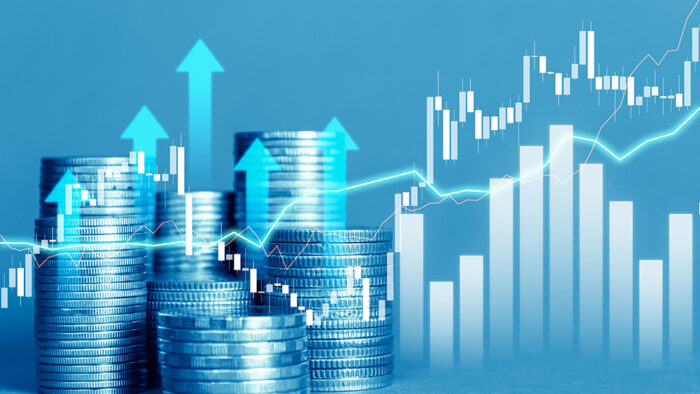JPMorgan’s 14th Annual Energy Paper (subtitled “Electravision”) is as always packed with data and insights. Mike Cembalest has few peers among investment writers. Two themes, the slow electrification of western economies and the challenges of Electric Vehicles (EVs) stood out.
As Cembalest has noted before, renewables are gaining market share of power generation faster than electricity is growing its share of primary energy use. Around a fifth of US electricity generation comes from solar and wind. Texas is about a quarter of US windpower (see Windpower Stumbles On Unique American Mineral Rights) and Iowa relies on wind for over half of its electricity (See Offshore Wind vs Onshore). Wind’s market share doesn’t appear to correlate with electricity prices in states, but solar does.
The growth in renewables is exposing more grids to intermittency, since it’s not always sunny and windy. Battery storage is expected to be the major solution, but so far it’s made few inroads. Pumped storage relies on using electricity when it’s cheap (ie midday solar) to move water uphill, releasing it to generate power when demand exceeds renewables supply (breakfast and dinner time). It’s low tech, and yet this still represents 70% of utility scale storage.
Therefore, existing dispatchable power (usually natural gas, sometimes coal) is being retained. Because renewables operate at much less capacity than natural gas plants (typically 25-35% vs >90%), adding 1MW of solar capacity does little to reduce the need for the traditional energy it’s supposed to replace.
The result is adding renewables means carrying ever more redundant dispatchable capacity. Regional grid operators report that new renewables lead to only 10-20% of equivalent capacity reduction of coal or gas. It’s why solar and wind aren’t as cheap as their proponents like to think (see Renewables Are Pushing US Electricity Prices Up).
It also means capacity buffers are falling. New England expects peak summer generation capacity to drop below 10% within a decade, from over 25% currently. The recent surge in data centers to support AI is putting further pressure on power supply.
We tolerate power outages which rarely last more than a few hours. We haven’t had any natural gas outages, which would occur if, for example, very cold weather interrupted production. We’ve had some near misses, including in New York on Christmas Eve morning in 2022. If gas supply was cut, technicians would need to visit every building to ensure no residual gas had leaked while the pilot light was out. Frozen water pipes would presumably be common.
Engineers estimated that restoring service to 130,000 customers could take five to seven weeks. Let’s hope none of us ever lives through that.
On Electric Vehicles (EVs), estimates of their carbon impact usually rely on a grid’s average emissions intensity based on its mix of power. But Cembalest argues that it’s the marginal source that is more important. For example, if most drivers charge their cars overnight, a grid’s heavy reliance on solar power won’t help. The grid may be relying on fossil fuels or even have to invest more in storage. Bad news for EVs is that marginal emission rates are 1.5X average ones, reducing the carbon benefits of EVs.
Cembalest recounts the sorry tale of the new owner of a Ford F-150 Lightning EV who encountered many non-working EV chargers on a trip north from the Bay area. Tesla owners still report very good experience with charging.
Hydraulic fracturing produces over half of America’s primary energy. This technique remains almost exclusively American although Argentina’s Vaca Muerta shale play is a rare foreign example. It’s hard to conceive how the US economy would look without fracking. We’d face higher energy prices, slower growth and continued reliance on foreign imports. The shale revolution has been an enormous benefit to Americans and our trade partners.
JPMorgan’s Annual Energy Paper is full of interesting facts. Europe is colder than the US, because it’s farther north. How much farther? The 44th parallel north runs through upstate New York and across the Atlantic, passing just north of San Marino. 92% of Americans live below this line, while 82% of Europeans live above it. This is why 10% of European households have air conditioning vs 90% in the US. The increasing use of heat pumps in new European dwellings is making a/c available, since all that’s required is to run the heat pump in reverse on warm days. This will offset some of the efficiency benefits that come with heat pumps.
Mike Cembalest is in that rare category of writers whose output informs, surprises and is always worth reading.
—
Originally Posted April 10, 2024 – JPMorgan Explains Electravision
Important Disclosures
The information provided is for informational purposes only and investors should determine for themselves whether a particular service, security or product is suitable for their investment needs. The information contained herein is not complete, may not be current, is subject to change, and is subject to, and qualified in its entirety by, the more complete disclosures, risk factors and other terms that are contained in the disclosure, prospectus, and offering. Certain information herein has been obtained from third party sources and, although believed to be reliable, has not been independently verified and its accuracy or completeness cannot be guaranteed. No representation is made with respect to the accuracy, completeness or timeliness of this information. Nothing provided on this site constitutes tax advice. Individuals should seek the advice of their own tax advisor for specific information regarding tax consequences of investments. Investments in securities entail risk and are not suitable for all investors. This site is not a recommendation nor an offer to sell (or solicitation of an offer to buy) securities in the United States or in any other jurisdiction.
References to indexes and benchmarks are hypothetical illustrations of aggregate returns and do not reflect the performance of any actual investment. Investors cannot invest in an index and do not reflect the deduction of the advisor’s fees or other trading expenses. There can be no assurance that current investments will be profitable. Actual realized returns will depend on, among other factors, the value of assets and market conditions at the time of disposition, any related transaction costs, and the timing of the purchase. Indexes and benchmarks may not directly correlate or only partially relate to portfolios managed by SL Advisors as they have different underlying investments and may use different strategies or have different objectives than portfolios managed by SL Advisors (e.g. The Alerian index is a group MLP securities in the oil and gas industries. Portfolios may not include the same investments that are included in the Alerian Index. The S & P Index does not directly relate to investment strategies managed by SL Advisers.)
This site may contain forward-looking statements relating to the objectives, opportunities, and the future performance of the U.S. market generally. Forward-looking statements may be identified by the use of such words as; “believe,” “expect,” “anticipate,” “should,” “planned,” “estimated,” “potential” and other similar terms. Examples of forward-looking statements include, but are not limited to, estimates with respect to financial condition, results of operations, and success or lack of success of any particular investment strategy. All are subject to various factors, including, but not limited to general and local economic conditions, changing levels of competition within certain industries and markets, changes in interest rates, changes in legislation or regulation, and other economic, competitive, governmental, regulatory and technological factors affecting a portfolio’s operations that could cause actual results to differ materially from projected results. Such statements are forward-looking in nature and involves a number of known and unknown risks, uncertainties and other factors, and accordingly, actual results may differ materially from those reflected or contemplated in such forward-looking statements. Prospective investors are cautioned not to place undue reliance on any forward-looking statements or examples. None of SL Advisors LLC or any of its affiliates or principals nor any other individual or entity assumes any obligation to update any forward-looking statements as a result of new information, subsequent events or any other circumstances. All statements made herein speak only as of the date that they were made. r
Certain hyperlinks or referenced websites on the Site, if any, are for your convenience and forward you to third parties’ websites, which generally are recognized by their top level domain name. Any descriptions of, references to, or links to other products, publications or services does not constitute an endorsement, authorization, sponsorship by or affiliation with SL Advisors LLC with respect to any linked site or its sponsor, unless expressly stated by SL Advisors LLC. Any such information, products or sites have not necessarily been reviewed by SL Advisors LLC and are provided or maintained by third parties over whom SL Advisors LLC exercise no control. SL Advisors LLC expressly disclaim any responsibility for the content, the accuracy of the information, and/or quality of products or services provided by or advertised on these third-party sites.
All investment strategies have the potential for profit or loss. Different types of investments involve varying degrees of risk, and there can be no assurance that any specific investment will be suitable or profitable for a client’s investment portfolio.
Past performance of the American Energy Independence Index is not indicative of future returns.
Disclosure: SL Advisors
Please go to following link for important legal disclosures: http://sl-advisors.com/legal-disclosure
SL Advisors is invested in all the components of the American Energy Independence Index via the ETF that seeks to track its performance.
Disclosure: Interactive Brokers
Information posted on IBKR Campus that is provided by third-parties does NOT constitute a recommendation that you should contract for the services of that third party. Third-party participants who contribute to IBKR Campus are independent of Interactive Brokers and Interactive Brokers does not make any representations or warranties concerning the services offered, their past or future performance, or the accuracy of the information provided by the third party. Past performance is no guarantee of future results.
This material is from SL Advisors and is being posted with its permission. The views expressed in this material are solely those of the author and/or SL Advisors and Interactive Brokers is not endorsing or recommending any investment or trading discussed in the material. This material is not and should not be construed as an offer to buy or sell any security. It should not be construed as research or investment advice or a recommendation to buy, sell or hold any security or commodity. This material does not and is not intended to take into account the particular financial conditions, investment objectives or requirements of individual customers. Before acting on this material, you should consider whether it is suitable for your particular circumstances and, as necessary, seek professional advice.




























Join The Conversation
If you have a general question, it may already be covered in our FAQs. If you have an account-specific question or concern, please reach out to Client Services.